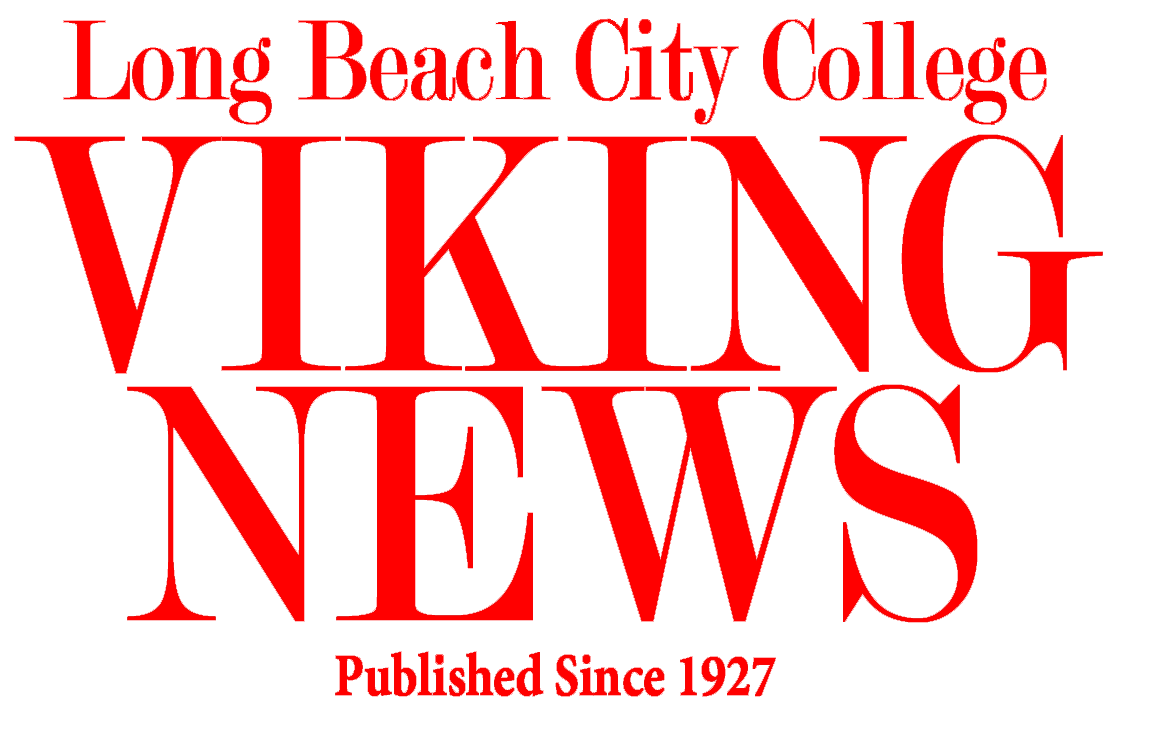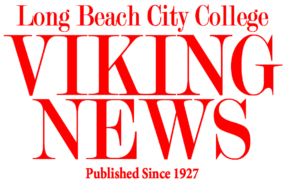When Long Beach City College’s waste collection company, Athens Services offered a move from two trash bins (one for recycling and one for all other waste) to just a brown bin, the school jumped at the opportunity and officially made the switch for both campuses in November of 2016.
“It just makes sense, rather than someone collecting the trash and recycling we just have one container and we don’t have to worry about if it’s recyclable or not. It’s easy to just throw it away and once the collection services have it, they know what to separate and what to recycle,” Associate Director of Public Relations and Marketing at LBCC Stacey Toda said.
Once waste gets tossed into one bin, it may actually create a bigger problem for clean recycling sorting companies like Potential Industries, who receive recycling from companies like Athens Services who use a variety of methods to sort trash before dropping it off.
The Viking went to Potential Industries in Long Beach and spoke with Senior Account Executive Ted Smith.
“When people put trash in the bin they don’t think about what it takes to get rid of that contamination, the more trash in the bins the higher the cost. Within the recycling bin, there is a certain amount of trash, about 20-30% and we have to sort through that,” said Smith.
While the move to one bin is convenient for the LBCC community, it is not entirely sustainable, nor does it teach us to be mindful of where and how we are disposing of waste.
Step into any classroom throughout both campuses and you are likely to find a small trash can filled with gum, paper, liquids and food waste. That one trash bin has its own plastic bag and is eating up the cost of labor to clean out. Also including the cost of purchasing the bins and their replacements.

Julian Dautremont a representative for The Association for the Advancement of Sustainability in Higher Education has a solution for this.
“Why not invest in high capacity, well labeled, really good waste stations for the hallways instead of having the waste in a classroom? One of these bins for every, say, five classrooms can significantly reduce the waste of what you send to landfill,” Dautremont said.
A move like this would implore students and staff to be cautious and aware of their waste, because Athens Waste acts more as a trash courier.
During a visit to one of Athens many locations, each of which serves a different purpose, the Viking spoke to Ruby Sisqueiros who was at the front desk.
“We’re not a dumpsite. We pick up and dispose of it in different locations,” Sisqueiros said as she sent out instructions for trucks at the Athens locations she works at in Torrance.
Athens has temporary franchise contracts with multiple cities where they are the sole company collecting waste. They may also be hired through open market cities where businesses can hire them for waste collection services. Much like LBCC has chosen to do with Athens services through a contract which goes up for bid in about three years.
“A lot of these materials go all over the country or all over the world. The idea that it’s local is not correct. It’s a global business. We have to go where the market goes,” Ted Smith said when explaining where the recycling at Potential Industries is sold to.
“Even if you take it to a local center, most end users for aluminum are in Kentucky or Alabama.”
Athens deploys different trucks for different waste. A truck picking up just cardboard from LBCC will most likely drop off that haul to Potential industries. An Athens truck picking up waste from LBCC will go to the main Material Recovery Facility (MRF) site in the City of Industry.
“It’s a process of mechanical screens, optical sorting units and labor,” Smith said.
Once the trash is sorted at the MRF it could end up anywhere: clean recycling to Potential industries, cardboard to a box manufacturing company, waste to the Southeast Resource Recovery Facility (SERRF) in Long Beach, and any other material to wherever there is a market for it.
“We get all of Long Beach residential waste, about 40% and the other 60% is surrounding areas,” SERRF Operations Officer Alan Foley said.
SERRF is unique in that it is one of two plants like it in California that is using up 99.9% of the materials.
“Diversion. That’s the main reason we’re here, waste diversion from landfills,” Foley said.
Once waste is dropped off at SERRF’s refuse storage area, it is picked up by a crane and dumped into a furnace where the heat is converted into energy and sent to the grid.

Metals left over from the incineration are sold to SA Recycling and the ash from the entire process is picked up by West Coast Sand and Gravel to be taken to El Sobrante Landfill in Corona where it becomes cement for the landfill.
The waste from our campus doesn’t stop at trash bins, it also includes cardboard waste from the Viking Express student store and compost from the LAC cafeteria.

Dave Mcdonald, manager for the cafeteria at LAC, has followed government and city ordinances as well as found innovative ways to prevent waste.
The cutlery is made of compostable materials, pre-packaged food is served in biodegradable and recyclable materials, and every Friday a non-profit called Food Finders picks up anything left over from the week to give out to the homeless.
“It is the only non-profit that takes already prepared foods in bulk and original packaging,” Mcdonald said.
Because of its limited hours, the PCC cafeteria has found it most sustainable to put all of the food and waste in a compactor and cardboard in a separate white bin, which Athens then picks up.
“They are not composting over there [PCC] because it is not enough, but they [Athens] told us to fit as much into the compactor,” Mcdonald said.
Mcdonald has a blunt and realistic outlook on how we as consumers should start to think about the waste we consume and throw away.
“For me recycling is not the end all be all, I would rather use something that won’t be around forever. Regardless of if it’s recyclable or not, that’s not the point. We live in a world full of litter, if its made to be used once it shouldnt last forever,” Mcdonald said.
So what are some actions the LBCC community can easily do or change to be sustainable now?
“Individual behavior changes that students can make are: don’t buy very much, buy green, eat less meat, take alternative transportation, turn off the lights,” Julian Dautremont said.
“I think you’re likely to create bigger changes by changing the systems that lead people to be sustainable. Bigger picture things and higher level changes that can have a spillover effect.”
One of these higher level changes would be to change where your energy is coming from in the first place, Dautremont said. This could be done by purchasing renewable energy from a renewable energy developer and be aware of our carbon emissions as a campus.
LBCC could also make the decision to become members with AASHE at an organization level, which happens to be discounted for community colleges. Once a member, LBCC would have access to their campus sustainability hub, which includes thousands of online resources for sustainability in higher education and has around 30,000 active members posting and connecting daily.
From there, LBCC could join one of the 30 to 40 other community colleges across the nation that is in the sustainability tracking, assessment and rating program.
“Colleges use it to collect and track their sustainability. Through comprehensive assessment the college submits data and gets a score that translates to a rating. It is a way to tell your story that’s comparable to what other institutions are doing and report progress,” Dautremont explained.
“All kinds of things have come out of that because now suddenly there is money to support student innovation and sustainability. Having resources available to back those projects is really sustainable to making that change happen.”
Currently, LBCC is implementing drought resistant plants as well as energy saving mediums during new remodeling on both campuses.
One can also connect with AASHE by signing up for their newsletter which includes announcements, updates and resources regarding sustainability for higher education communities and campuses.
Several representatives for Athens Services were contacted for an interview. None responded at the time of publishing.


